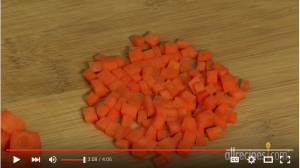Basic Knife Skills
Always remember 3 rules when using kitchen knifes:
- Sharp is Safe! A sharp knife will cut food. A dull knife is likely to slide off the food and cut you.
- Use a Wooden, Plastic or Composite Cutting Board. A proper cutting board will keep your knife sharp and safe. Other surfaces will dull knife blades.
- Clean Knife Blades By Hand. Use water, dish soap and a kitchen towel to wipe blades as soon as you finish using them. Again, this will keep your knife sharp.
What Knife Should I use?
- Use a chef’s knife for chopping and dicing, Notice a chef’s knife is a longer knife with a bigger blade.
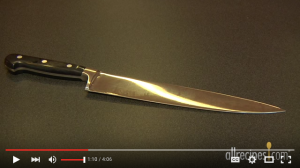
- A paring knife for small tasks such as seeding, pealing and trimming fat. Notice a paring knife is a small knife with a short blade.
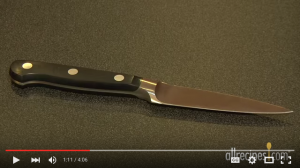
- A cerated knife for slicing bread and tomatoes. Notice a cerated knife has sharp teeth on the blade.
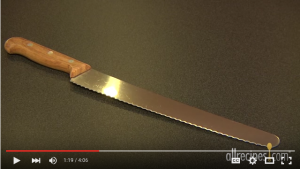
How To Hold A Knife:
Grasp the knife with your thumb and forefinger where the blade meets the handle.
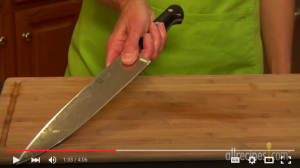
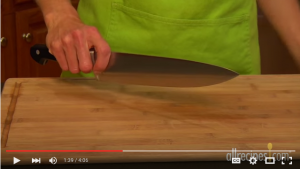
Use your other hand to hold the food. Curl your fingers inward (like a claw) on top of the food near where you will cut. Hide your thumb behind your fingertips. Keep the tip of knife on the cutting board.
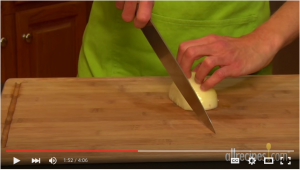
Terminology:
Chop: To cut into pieces with a sharp knife or other chopping device. Your pieces will be larger, and it is ok if they are not the same size.
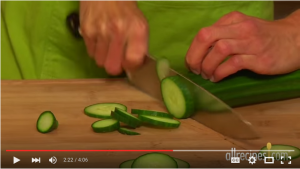
Dice: To cut foods into small cubes of uniform size and shape. Dicing will allow the food to cook evenly. It also looks better.
